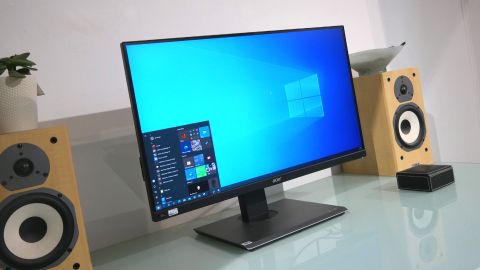TechRadar Verdict
Acer’s 28-inch 4K monitor is nicely calibrated, well put together and affordable, albeit at the cost of true HDR capability or USB-C connectivity
Pros
- +
Nicely calibrated IPS panel
- +
High-DPI 4K experience
- +
Full adjustable stand
Cons
- -
Very limited HDR support
- -
No USB-C connectivity
- -
Not terribly punchy
Why you can trust TechRadar
Is native 4K resolution from a color-accurate IPS panel now the minimum you should expect from a productivity panel? The Acer B287K implies something very much along those lines.
Available within spitting distance of $300 / £300, the Acer B287K isn’t exactly entry level. But it is conspicuously affordable given the overall feature set. The core of this business monitor is a 28-inch 4K IPS panel. It comes complete with a factory calibration report, HDR 10 support and several color space presets in its OSD menu.
Overall: 4
Design: 3.5
Features: 3.5
Performance: 4
Usability: 4
Value: 4
It’s also not a bad looking device thanks to slim bezels on three sides of the bezel, a robust stand which offers a wide range of adjustment, plus a USB hub. Of course, at this price point something has to go missing compared to premium panels.
For starters, this is not a true HDR monitor despite the HDR 10 support. It also lacks USB Type-C connectivity, an interface which is an ergonomic blessing, especially for laptop users, but comes at a significant cost. The Acer B287K is also not a bona fide content creation panel with really broad color coverage. Instead, it’s designed to deliver entry-level color accuracy plus that generous 4K pixel grid at an accessible price point.

Price and availability
At $339 in the US and £306 in the UK, the Acer B287K isn’t the cheapest 4K monitor with an IPS panel we’ve ever seen. But it is towards the lower end of the scale. At this rough price point, 27-inch panels are more common, though the Philips 288E2UAE offers a very similar 28-inch 4K IPS proposition on paper for slightly less money.
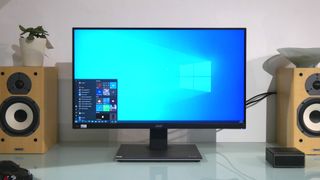
Design and features
The Acer B287K is sober suited to a fault, clothed almost exclusively in black and with the most minimal silver highlights. In short, this panel is all business.
So, instead of LED lighting or glossy trim, you get a nicely engineered and extremely stable stand that offers height, tilt, swivel and even pivot into portrait mode adjustments. That’s pretty impressive at this price point.

You also get a dual-port USB 3 Type-A hub for peripheral connectivity but not USB Type-C. The absence of the latter means that the Acer B287K does not support single-cable connectivity for driving the display, charging a laptop and hooking up peripherals.
It’s a feature that’s hard to live without once you’re used to it. But it does add significant cost and we’ve yet to see a 4K monitor with USB-C at anything like this price point. That said, connectivity is otherwise well catered for thanks to a pair of HDMI ports and DisplayPort in both full-size and Mini formats.
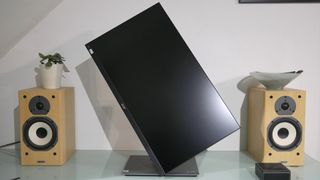
Panel size 28-inch
Panel type IPS
Resolution 3,840 x 2,160
Brightness 300cd/m2
Contrast 1000:1
Pixel response 4ms
Color coverage 100% sRGB
Refresh rate 60Hz
Vesa 100mm x 100mm
Inputs DisplayPort, Mini displayPort, HDMI 2.0 x2
The Acer B287K’s 28-inch 4K panel is rated at 300 nits, 4ms and 1,000-to-one contrast. So, it’s a pretty conventional SDR model, on paper. There is HDR signal processing in the form of HDR 10 support. But this is not an HDR panel. It lacks sufficient peak brightness for that, not to mention not offering local dimming of any kind.
As for color accuracy, the Acer B287K comes complete with a factory calibration report demonstrating DeltaE figures below two across the board for the sRGB gamut. Speaking of which, Acer says the B287K is good for 100 percent of the sRGB gamut but does not quote coverage for other spaces such as sRGB and DCI-P3. This is not, then, a full-on content creation monitor. But then that’s implicit in the price. True pro-level panels cost multiples of the Acer B287K’s circa $300 / £300 real-world price.
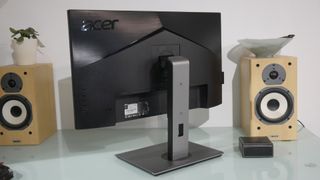
Performance
Our experience thus far of this relatively novel 28-inch as opposed to 27-inch class of affordable 4K IPS monitor has thus far been inauspicious. The Philips 288E2UAE disappointed with dull and relatively dingy image quality.
Happily, the Acer B287K is that little bit bolder and brighter, despite offering almost identical on-paper specifications. There’s not a huge amount in it and this is not a particularly punchy panel. But it does at least feel good for the 300 nit specification.

As the calibration report implies, it’s pretty well set up from the factory with nice smooth gradients and no obvious compression at either end of the spectrum. It’s also worth noting that HDR content is handled well. Granted, you’re not getting a true HDR experience. But colors are rendered accurately and, arguably just as important, SDR content looks good when running Windows in HDR mode, so you could plausibly run this monitor in HDR mode full time.
That’s not something you can say about most monitors, where SDR content looks so bad in HDR mode, you are forced to jump between modes to ensure a decent viewing experience. While we’re on the subject of jumping between modes, Acer has included presets for sRGB, Rec. 709 and DCI-P3, but not Adobe RGB.
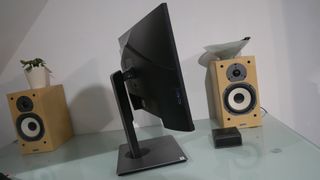
There’s a low latency model, plus two levels of user-configurable pixel overdrive, too. But those features feel like hangovers from Acer’s multimedia and gaming models rather than significant benefits for productivity. That said, pixel response is good on the lower of the two overdrive settings (the fastest mode introduces overshoot) and you could actually game on this panel. It’s fairly speedy.
It’s also very sharp and detailed as a consequence of the 3,840 by 2,160 pixel 4K native resolution squeezed into a 28-inch panel. OK, the pixel density is slightly lower than a 27-inch 4K screen. But not so much you’ll notice subjectively. This still delivers that gorgeous high-DPI experience with super-sharp fonts at an accessible price point.
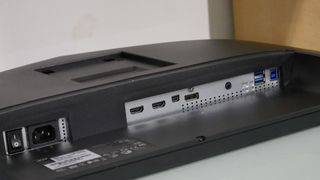
Finally, and for the record, the Acer B287K’s integrated stereo speakers are truly awful thanks to feeble volume levels and tinny quality. Even as a temporary stopgap, they’re unfit for purpose.
Verdict
The Acer B287K will not burn you a new set of retinas. It’s a resolutely SDR panel with moderate 300 nit brightness and HDR support only in terms of signal processing rather than rendering. It also lacks USB Type-C connectivity, which limits its ergonomic appeal, albeit at this price point it was never a realistic inclusion.
However, this is a nicely calibrated monitor with a decent IPS panel, high quality stand and that delicious 4K high-DPI experience. While it’s not a pro-level content creation panel, it is a nice all-round productivity tool, especially at the price.
- We've featured the best cheap monitor sales and deals.
Contributor
Technology and cars. Increasingly the twain shall meet. Which is handy, because Jeremy (Twitter) is addicted to both. Long-time tech journalist, former editor of iCar magazine and incumbent car guru for T3 magazine, Jeremy reckons in-car technology is about to go thermonuclear. No, not exploding cars. That would be silly. And dangerous. But rather an explosive period of unprecedented innovation. Enjoy the ride.
